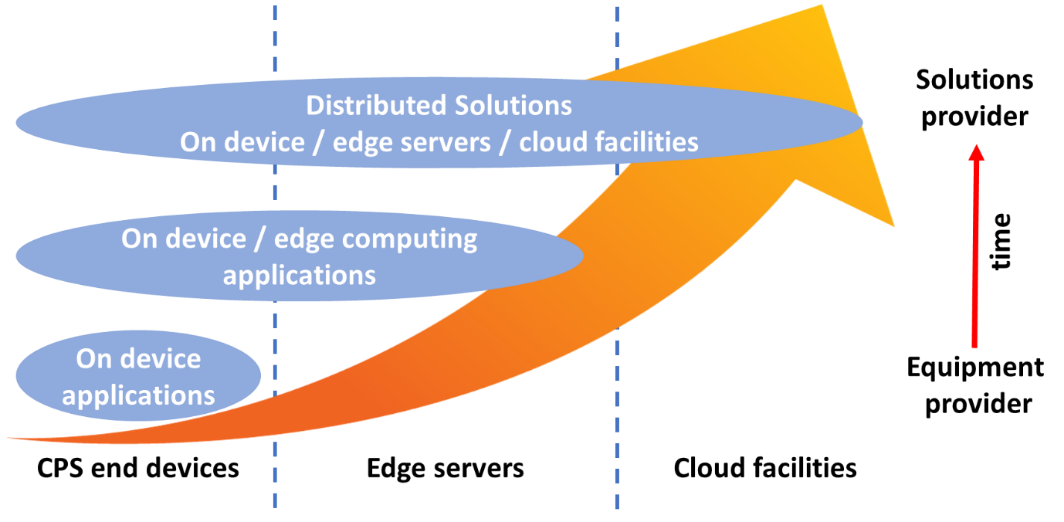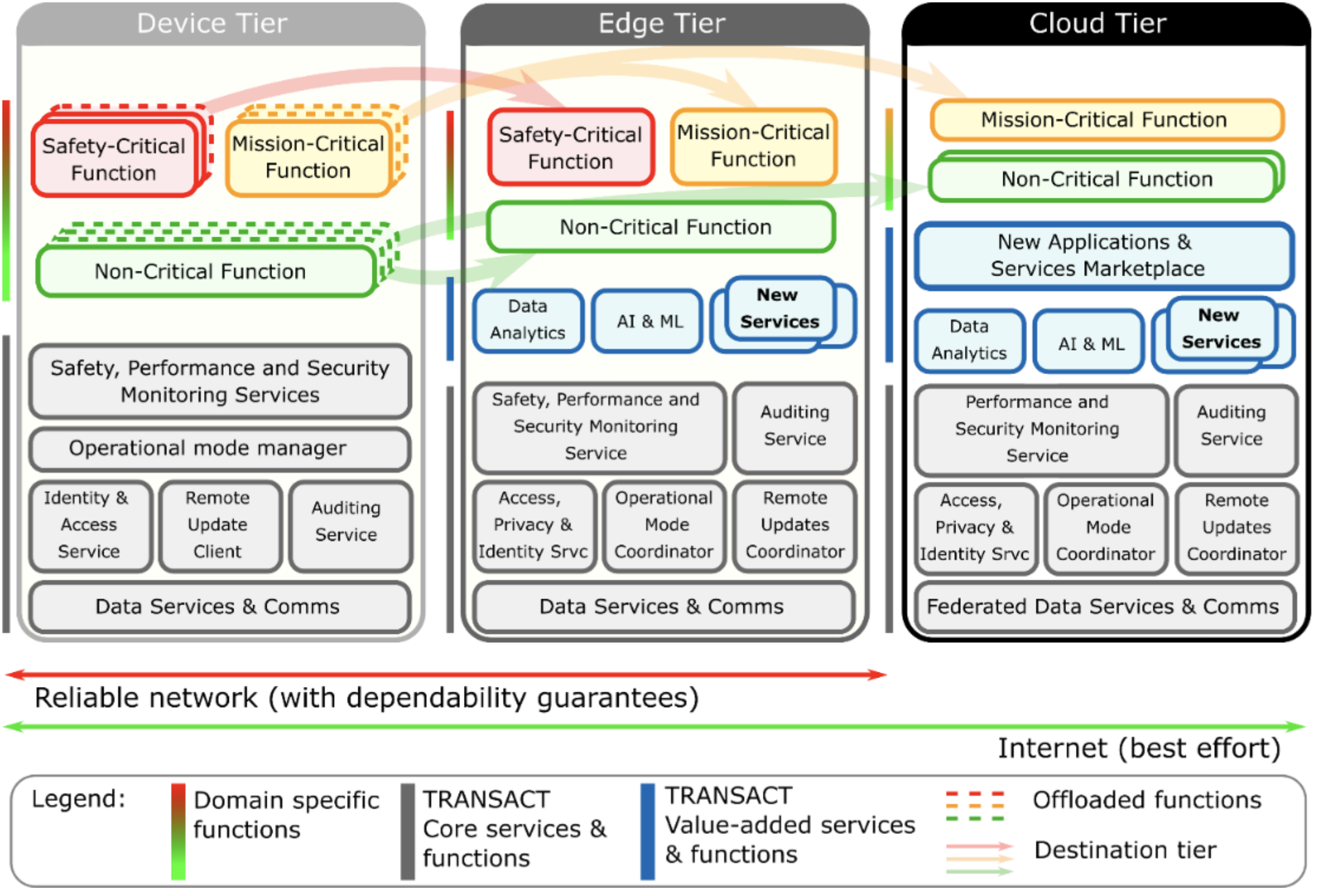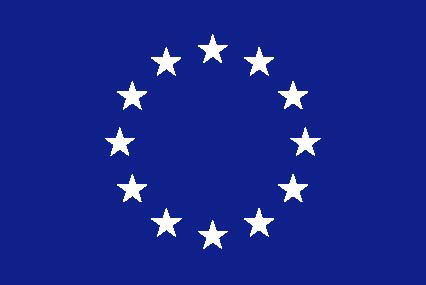Cyber-Physical Systems (CPSs) are all around us. From telecommunications to energy, to transport to healthcare, CPSs play a crucial role in a variety of key sectors. However, we are not exploiting their full potential yet. Safety-critical and mixed-critical systems especially are still deployed as standalone systems because currently that’s the only way to ensure the system’s safety, security, and performance. A self-driving vehicle is a good example: if it fails to respond or if it responds too slowly to the dynamic traffic conditions, people can get hurt or even die.
At the same time market trends show the need for safety-critical systems to be equipped with novel services based on smart data analytics able to improve their functionality and safety over time, while enabling access to crucial (off-device) information.
The TRANSACT European research project, which operates in partnership with the Eclipse Foundation, was created to develop a universally applicable, distributed architecture enabling safety-critical CPS to leverage cloud and edge computing capabilities without compromising their critical requirements (Figure 1). This will pave the way for faster, cheaper, and more flexible solutions tailored to customers’ needs.

Figure 1: TRANSACT targets the transformation from local CPS into distributed solutions
The project began as part of the Electronic Components and Systems for European Leadership Joint Undertaking (ECSEL JU), a European research, development, and innovation funding program that later became the Key Digital Technologies Joint Undertaking (KDT JU). Our three-year project was funded under 2020’s call to action, and we started our efforts in June 2021. We have 30 consortium members, including Philips Medical Systems, the Technical University of Denmark, and the Netherlands Organisation for Applied Scientific Research, to name a few.
TRANSACT builds on several previous projects, so some of the partners already knew each other and had been collaborating on similar topics. Some of our partners had also already been involved with the Eclipse Foundation and the projects it hosts.
Overall, the broad participation in TRANSACT demonstrates that European research projects can foster collaboration across academic, business, and public sector interests to drive results that are applicable to the real world.
Stage One: Identifying a Common Architecture
The TRANSACT project is currently wrapping up its first year. We spent the time working through five industrial use cases, and we investigated the state of the art, the current architectures in use by safety-critical CPS, and the most suitable workflows for edge/cloud technologies. We adopted a scenario-based approach where we focused on the most relevant capabilities of AI/IoT technologies in solving real industrial needs and highlighting the added value from the user perspective. As a result, the high-level end user needs were translated into concrete technical and system requirements.
Our five use cases cover:
- Remote operations of autonomous vehicles navigating in an urban context
- Critical maritime decision support systems enhanced by distributed AI
- Cloud-featured battery management systems for electric vehicles
- Edge/cloud-based clinical applications platform for image guided therapy and diagnostic imaging systems
- Critical wastewater treatment decision support enhanced by distributed AI
Part of that process also included looking at existing concepts in the academic world and at industrial best practices. We considered the trade-off between safety and performance on the one hand and security and privacy on the other to identify some core concepts that can be applied to future solutions. Our university partners in the consortium did a thorough investigation, and we’re going to be applying the most relevant concepts they found to our industrial use cases over the next two years.
Now that we’ve identified the commonalities among the different domains and we derived the first sketch of a common cross-domain architecture (Figure 2), we’re ready to start developing its individual components in more detail.

Figure 2: TRANSACT reference architecture
Stage Two: Applying Individual Concepts to Domain-Specific Solutions
There are two core work packages in the project.
The first is to translate those concepts we identified in the first year of the project into solutions that can be deployed in individual domains. We already have prototypes of the core services and demos for our five key use cases.
The other part is to develop new applications or value-added services for specific use cases. For some of the use cases, we’ve been working on how we can run computationally intensive algorithms using container technology. Similarly, in the cloud, we’ve been working on how we can split existing monolithic software into microservices.
The next step will be to combine the two: get those components into the actual products we’re going to be developing.
The goal is to enable continuous deployment and independent releasing of applications. This is partially to make these cyber-physical systems easier to maintain, but also to enable a subscription-based business model, which is otherwise basically impossible with embedded systems. This has been a key goal of industry. We’re also looking to leverage some simulation-based tools and visualization to help us develop those systems more quickly.
Integration With Other Eclipse Foundation Projects Planned
It’s definitely been good to be connected to the open source community at the Eclipse Foundation. Several of our partners in the research project are developing tools and methods that could be added to Eclipse Foundation projects. As an example, the Eclipse POOSL language and its supporting tools are being applied and further improved in the TRANSACT project.
To that end, we’ve also been identifying the Eclipse Foundation working groups we think will benefit most from the results of our project. The Eclipse IoT Working Group is a prime example. The basic concepts of TRANSACT can be applied to any domain, and we’re actively trying to share the results because we want it to be domain-independent.
There’s certainly a strong need for safety-critical systems to meet future needs, and the TRANSACT project is a strong step in that direction. But there are many players that can benefit from this work. There’s a lot of practical guidance for them to leverage as they make the move from local devices to more distributed solutions.
To learn more about TRANSACT, visit our webpage. And follow us on LinkedIn and Twitter.
|
|
 |
TRANSACT has received funding from the ECSEL Joint Undertaking (JU) under grant agreement No 101007260. The JU receives support from the European Union's Horizon 2020 research and innovation programme and Netherlands, Finland, Germany, Poland, Austria, Spain, Belgium. Denmark, Norway.




